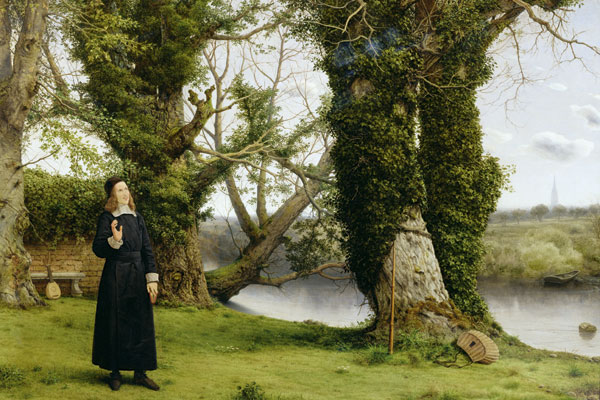The property pages of Country Life invariably feature an old rectory or two, probably graceful 18th-century, of honeyed Cotswold stone, and if you plan to move in you will need a deep pocket. This is Aga Saga country, Joanna Trollope territory. Old vicarages, old rectories, all the defrocked plant of the Church of England, are in hot demand: the estate agent’s dream. They are substantial, elegant, they propose permanence and stability and some sort of evocative past, and today they will be tricked out with central heating, en suite bathrooms and, of course, that Aga.
It was not always thus. Deborah Alun-Jones’s book is a collection of essays about various vicarages, parsonages, chancelleries and their well-known inhabitants, from Sydney Smith to John Betjeman, and it has to be said that a resounding theme is the cold. Nobody was comfortable in the ecclesiastical plant, time was. Large, draughty and damp; never mind the romantic overtones, she suggests, the ‘dreamlike idyll’ that she finds as a thread to link the quality of these various occupancies, the prompt for creativity.
The link is a touch tenuous, it has to be said, and most of the people concerned were in these houses because they had to be — they were on church business: Sydney Smith, Dorothy Sayers growing up in her father’s Bluntisham Rectory, R.S.Thomas at Manafon, George Herbert at Bemerton, near Salisbury, the Benson children and later the de Waalls in the chancellery at Lincoln. Rupert Brooke does indeed appear to have found in the Old Vicarage at Grant-chester some kind of lyrical inspiration, an arcadia convenient for Cambridge and for plunging naked into the Cam in fits of neo-paganism.
And Vikram Seth in the house where George Herbert lived and wrote, has found inspiration and resonances in the connection with his great predecessor. The Bohemian family were bohemianly impoverished and uncomfortable in the old rectory at Farnborough in the late forties — no mains water, drainage or electricity — with visitors such as Maurice Bowra and Osbert Lancaster roped in to join a village concert. And only Evelyn Waugh complaining — reasonably enough, it would seem — that the house was cold, dark and poky.
Deborah Alun-Jones has homed in on the literary associations of eight houses; a ballast of research, and some nice robust accounts of what it was like to be the young Dorothy Sayers in a huge, isolated Fenland rectory, or the young Bensons in the ancient Chancellery at Lincoln. The Bensons were an odd lot: their father, E.W. Benson, eventually became Archbishop of Canterbury, and the four children all grew up to be writers of one kind or another, including E.F. Benson of the Mapp and Lucia novels.
A century later, Edmund de Waal, ceramicist and author of The Hare with Amber Eyes, grew up there with his brothers, children of a later Chancellor, and these, like the Bensons, revelled in the space and resources of what sounds like the most engaging of the houses concerned, a jumble of assorted periods and internal complexity. Then there is Tennyson at Somersby, the chaotic and unconventional family life of the future Poet Laureate and his ten siblings, and a portrait of him as a young man with ravishing good looks.
The Wry Romance of the Literary Rectory is generously and imaginatively illustrated: houses, people, a colour plate of John Piper’s glorious memorial window to Betjeman that made me want rush at once to all Saints, Farnborough. The pleasure of the book, indeed, is in the wealth of detail — what it was like to live in those places in those times — and the way in which it focuses on a particular point in particular lives.
Most readers will probably know a little — or a lot — about Tennyson or Rupert Brooke, but there will be something unfamiliar or intriguing here. You may wish to give a copy to a friend now basking in an up-to-date old rectory as food for thought.






Comments